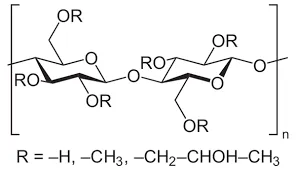
Dec . 19, 2024 00:35 Back to list
Redispersible Polymer Powder Production Methods and Techniques for Optimal Performance
Understanding the Manufacturing Process of Redispersible Polymer Powder
Redispersible polymer powders (RDPs) have gained significant traction in various applications, particularly in construction, coatings, and adhesives. These powders are typically produced through a drying process that involves converting polymer emulsions into a dry powder form, which can be easily re-dispersed in water. This article delves into the intricate manufacturing process of redispersible polymer powders and the key factors influencing their quality and performance.
1. Starting with Polymer Emulsions
The manufacturing process begins with polymer emulsions, which are stable mixtures of water, polymers, and additives. Common types of polymers used in RDP manufacturing include vinyl acetate, ethylene, and styrene. The choice of polymer significantly affects the properties of the final product, including its adhesion, flexibility, and water resistance. Initially, these emulsions are produced using methods such as emulsion polymerization, where monomers are polymerized in an aqueous medium, resulting in stable particle sizes suited for various applications.
2. Concentration of Emulsions
Once the polymer emulsion is formed, the next step involves concentrating the emulsion. This is typically achieved through techniques such as ultrafiltration, where water is removed from the emulsion while retaining the polymer content. Concentration not only increases the solid content of the emulsion but also enhances the efficiency of the subsequent drying process. This step is crucial as it helps in reducing energy consumption during drying and improving the overall yield of the final product.
After concentration, the emulsion is subjected to a drying process to produce redispersible polymer powder. There are several drying methods available, including spray drying, freeze drying, and drum drying. Among these, spray drying is the most commonly employed method due to its efficiency and ability to produce powders with desired particle sizes.
redispersible polymer powder manufacturing process

In spray drying, the concentrated emulsion is atomized into a fine mist, which is then introduced into a hot air chamber. As the droplets of emulsion come into contact with hot air, the water evaporates rapidly, leaving behind fine particles of polymer. The temperature and humidity of the drying air are critical parameters to control, as they influence the morphology and properties of the final powder.
4. Post-Drying Processing
Once drying is complete, the resulting redispersible polymer powder may undergo various post-processing steps. This includes milling to achieve the desired particle size distribution, as well as packaging for transport and storage. It’s essential that the powders are stored in a moisture-free environment since exposure to moisture can lead to clumping or agglomeration, hindering their re-dispersibility when mixed with water.
5. Quality Control
Quality control is an integral part of the RDP manufacturing process. Several tests are conducted to ensure that the powders meet industry standards. Key performance indicators include re-dispersibility, particle size distribution, and residual moisture content. The application of quality management systems, such as ISO standards, helps in maintaining consistency in product quality.
6. Conclusion
The manufacture of redispersible polymer powders is a complex process involving multiple steps, including the preparation of polymer emulsions, concentration, drying, and post-processing. Each of these stages is critical in determining the quality and performance of the final product. As industries continue to seek high-performance materials, understanding the intricacies of RDP manufacturing will be essential for developers aiming to optimize their formulations. The ability of RDPs to be easily re-dispersed in water makes them invaluable in numerous applications, underpinning their significance in modern material science and engineering.
-
Versatile Hpmc Uses in Different Industries
NewsJun.19,2025
-
Redispersible Powder's Role in Enhancing Durability of Construction Products
NewsJun.19,2025
-
Hydroxyethyl Cellulose Applications Driving Green Industrial Processes
NewsJun.19,2025
-
Exploring Different Redispersible Polymer Powder
NewsJun.19,2025
-
Choosing the Right Mortar Bonding Agent
NewsJun.19,2025
-
Applications and Significance of China Hpmc in Modern Industries
NewsJun.19,2025







